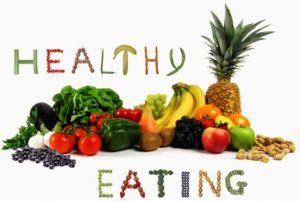How Your Diet Impacts Gestational Diabetes Risk?
- admin
- November 14, 2024
- 10:34 am
- No Comments

When it comes to pregnancy, everyone has advice about what to eat—or avoid.
But did you know that your diet can play a significant role in determining your risk of developing gestational diabetes mellitus (GDM)?
This article will take you on a journey through how food choices affect glucose levels, how certain eating habits can increase GDM risk, and what you can do to minimize that risk.
Let’s break it down into digestible bites.
“How Your Diet Impacts Gestational Diabetes Risk” Article Contents:
- Understanding Gestational Diabetes
- How Diet Influences Glucose Regulation
- Foods That Increase Gestational Diabetes Risk
- Foods That Reduce Gestational Diabetes Risk
- The Role of Portion Sizes and Meal Timing
- Real-Life Example: Sarah’s Journey with GDM
- Scientific Studies Linking Diet and Gestational Diabetes
- FAQs on Diet and Gestational Diabetes
- Conclusion: Nourish for Two, Wisely
Understanding Gestational Diabetes
Gestational diabetes occurs when the body struggles to regulate blood sugar levels during pregnancy.
As per BestDietarySupplementForDiabetics research, “Hormones from the placenta interfere with insulin’s efficiency, creating insulin resistance.
This, coupled with an inadequate diet, can result in elevated blood glucose levels.
While the condition often resolves after childbirth, it carries risks for both mother and baby, including complications during delivery and a higher likelihood of developing type 2 diabetes later in life.
How Diet Influences Glucose Regulation
Your body uses food as fuel, but not all fuels are created equal.
When you eat, carbohydrates break down into glucose, which enters your bloodstream.
Insulin, a hormone produced by the pancreas, acts as the gatekeeper, facilitating the absorption of glucose by your cells for energy.
Now, here is where things get tricky: an unhealthy diet overloaded with refined carbohydrates, sugary treats, and unhealthy fats can overwhelm this finely-tuned process.
Such foods cause rapid spikes in blood sugar levels, forcing the pancreas to release more insulin to maintain balance.
Over time, this excessive demand on the pancreas can lead to insulin resistance—a hallmark of gestational diabetes.
Pregnant women are particularly vulnerable to this imbalance.
Pregnancy hormones, such as human placental lactogen (hPL), naturally reduce insulin sensitivity to ensure the growing baby gets enough glucose.
However, when paired with a diet high in processed foods and low in nutrients, these hormonal shifts can tip the scales toward gestational diabetes.
On the flip side, choosing nutrient-dense, low-glycemic foods like whole grains, vegetables, lean proteins, and healthy fats helps regulate glucose absorption and insulin function.
Incorporating fiber-rich options like legumes and fruits slows digestion, preventing sugar surges.
This balanced approach keeps blood sugar levels steady, protecting both mother and baby from complications.
Foods That Increase Gestational Diabetes Risk
- Sugary Beverages: Drinks like soda, sweetened teas, and fruit juices deliver a sugar overload that spikes blood glucose levels. According to a study in Diabetes Care (2019), women who consumed high-sugar beverages during pregnancy were 35% more likely to develop GDM.
- Refined Carbs: White bread, pastries, and pasta made from refined flour are absorbed quickly, causing blood sugar surges. These foods lack fiber, which helps regulate glucose absorption.
- Trans Fats: Found in processed snacks and fried foods, trans fats worsen insulin resistance. A study published in the Journal of Clinical Nutrition (2020) linked trans fat consumption to higher GDM rates.
- Processed Meats: Bacon, sausages, and deli meats contain high levels of sodium and preservatives, which are associated with an increased risk of insulin resistance.
Foods That Reduce Gestational Diabetes Risk
On the flip side, a nutrient-rich diet can help keep blood sugar levels stable:
- Whole Grains: Foods like quinoa, brown rice, and oats are packed with fiber, which slows glucose absorption. A 2021 study in Nutrients found that women who consumed whole grains had a 25% lower risk of developing GDM.
- Leafy Greens: Spinach, kale, and broccoli are rich in magnesium, a mineral that improves insulin sensitivity. Include ample amounts of chromium as well.
- Healthy Fats: Incorporating avocados, nuts, and olive oil into your diet can improve hormonal balance and reduce inflammation.
- Low-Glycemic Fruits: Berries, apples, and pears release glucose gradually, avoiding sugar spikes. These fruits are a smarter choice compared to high-glycemic options like bananas or pineapples.
The Role of Portion Sizes and Meal Timing
Managing gestational diabetes is not just about choosing the right foods—it is also about controlling portions and timing your meals effectively.
Here is how these factors play a crucial role:
- Portion Control
Overeating, even when consuming nutrient-dense foods, can lead to excessive calorie intake, increasing the risk of weight gain—a significant contributor to gestational diabetes. Balanced portions that include lean protein, complex carbohydrates, and healthy fats help keep calorie intake in check. For instance, a serving of quinoa paired with grilled chicken and sautéed vegetables can provide energy without spiking blood sugar. - Meal Timing
Spacing out smaller meals throughout the day helps prevent blood sugar spikes and crashes. Skipping meals can cause blood sugar levels to drop too low, triggering cravings and overeating during your next meal. A steady eating schedule supports blood sugar stability, promoting better glucose control. - Snack Wisely
Healthy snacks, such as Greek yogurt with berries or a handful of nuts, can help bridge the gap between meals and prevent sudden blood sugar fluctuations. - Hydration
Don’t underestimate the importance of staying hydrated. Drinking water with meals aids digestion and prevents mistaking thirst for hunger.
By focusing on portion sizes and meal timing, you create a balanced approach that complements your dietary choices, optimizing your blood sugar levels during pregnancy.

Sharing Emma’s Journey with GDM
Emma, a 32-year-old marketing professional, had always juggled a busy schedule, often leaning on convenience foods to get through her day.
Sweet treats were her guilty pleasure—chocolates, pastries, and sugary drinks made regular appearances in her diet.
During her second pregnancy, Emma was diagnosed with gestational diabetes, leaving her overwhelmed and uncertain about how to proceed.
Determined to prioritize her health and her baby’s well-being, Emma sought the help of a nutritionist.
Together, they developed a meal plan that was realistic and sustainable.
Sugary snacks were swapped for nutrient-dense options like nuts, seeds, and fresh fruit.
Her sandwiches traded white bread for whole-grain alternatives, and processed meals were replaced with home-cooked dishes packed with vegetables and lean proteins.
Initially, the changes were challenging, but within a few weeks, Emma began to notice a difference.
Her blood sugar levels stabilized, and she felt more energetic.
By the end of her pregnancy, Emma had not only managed her gestational diabetes effectively but also adopted habits that she carried into her postpartum life.
Emma’s story demonstrates how small, consistent dietary changes can have a profound impact on managing gestational diabetes and improving overall health.
Scientific Studies Linking Diet and Gestational Diabetes
The relationship between diet and gestational diabetes (GDM) is not just anecdotal—it’s firmly supported by research.
Let’s explore some pivotal studies that demonstrate how food choices impact the risk:
- “Dietary Patterns and GDM Risk” (The Lancet, 2021): This large-scale study found that women who adopted a Mediterranean-style diet—high in healthy fats, vegetables, whole grains, and lean proteins—had a 30% lower risk of developing GDM. This dietary approach supports better glucose metabolism and reduces inflammation, two critical factors in preventing GDM.
- “Sugar Intake and GDM” (Journal of Maternal Health, 2020): This research highlighted the role of excessive sugar consumption in promoting insulin resistance during pregnancy. Sugary snacks and beverages create blood sugar spikes, overworking the pancreas and paving the way for GDM.
- “Low-Glycemic Diets in Pregnancy” (Obstetrics and Gynecology Journal, 2019): Foods with a low glycemic index (like lentils, quinoa, and most vegetables) release glucose slowly, maintaining stable blood sugar levels. The study showed that women who consumed low-GI foods were significantly less likely to experience the blood sugar fluctuations that contribute to GDM.
These studies emphasize how dietary choices directly influence the risk of gestational diabetes, making it clear that what you eat matters—for both you and your baby.
FAQs on Diet and Gestational Diabetes
Q-1. How does what I eat change my chances of gestational diabetes (GDM)?
A-1. Diet quality really matters. Patterns built around vegetables, fruits, whole grains, legumes, nuts, and minimally processed foods support better insulin sensitivity. On the flip side, lots of refined carbohydrates and ultra-processed foods can push your blood sugar higher and increase GDM risk. Think “balanced plate”: fiber first, then protein, then smart carbs, with added healthy fats. Also club it with a safe dietary supplement.
Q-2. Are carbs the enemy, or is it the kind of carbs?
A-2. It is the kind. Pregnancy still needs carbohydrates (a common target is at least about 175 g/day), but the goal is slower-digesting carbs with plenty of fiber. High glycemic load—big portions of rapidly absorbed carbs—raises glucose spikes. Choose intact grains, beans, lentils, and fruit, and pair carbs with protein and fat to smooth out blood sugar.
Q-3. Which foods or patterns seem protective?
A-3. Fiber is your friend. Higher intakes of whole grains, legumes, vegetables, and whole fruit are linked with lower GDM risk. Mediterranean-style and other plant-forward patterns help by improving insulin sensitivity and curbing post-meal glucose rises. Fermented dairy like yogurt and kefir can fit well, too, as part of an overall quality diet.
Q-4. What tends to raise risk?
A-4. Regular sugar-sweetened beverages, frequent fried foods, refined grains (white bread, pastries), and processed meats are usual suspects. Your race determines gestational diabetes and so does your daily food intake. Diets heavy in ultra-processed snacks and desserts can drive higher glycemic load. There’s also emerging evidence that frequent use of diet drinks or certain artificial sweeteners may be unhelpful—plain or sparkling water is a safer default.
Q-5. Does timing matter—should I change my diet before pregnancy?
A-5. Yes. Starting before conception (or as early as possible) pays off. Entering pregnancy with a high-quality, fiber-rich pattern is associated with lower GDM risk later. Small pre-pregnancy habits—swapping soda for water, adding a daily cup of beans, choosing intact grains—can compound into meaningful protection.
Q-6. What’s a simple day-to-day plan that supports lower risk?
A-6. Use a plate method: half non-starchy veggies; a palm-size protein; a fist of high-fiber carbs; a thumb of healthy fats. Example day: oatmeal with berries and nuts; lentil-veggie bowl with olive oil; yogurt with chia; salmon, quinoa, and greens. Stay hydrated, walk after meals, and ask your clinician for personalized targets.
Takeaway: Nourish for Two, Wisely
Your diet during pregnancy is not just about satisfying cravings—it is about creating a healthy environment for both you and your baby.
By choosing nutrient-dense foods, controlling portions, and being mindful of meal timing, you can reduce your risk of gestational diabetes.
If you are already at risk or have been diagnosed with GDM, don’t panic.
Work closely with your healthcare provider or a registered dietitian to create a tailored eating plan that supports your health.
After all, pregnancy is the perfect time to prioritize your well-being—and it starts with what’s on your plate.
References: